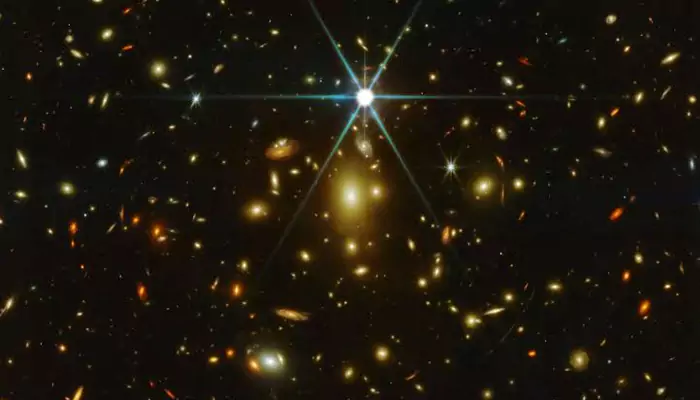Saving Earth's Rarest: Scientists Plan ‘Backup’ Storage for Endangered Species on Moon; Know More about ‘Lunar Safehouse’
- Admin
- 1 year ago
- 3 minutes read

What will happen if the earth gets destroyed some day? Will the signs of our existence be removed from everywhere?
It just took one not so huge asteroid to destroy those gigantic dinosaurs from the earth. What if the same thing happen again? Do we have any back-up plan to survive? The answer, as of now is “No”. In quest of alternate habitable options, scientists are exploring options like Mars and other Interstellar objects. Already, we lost so many species and some are facing extreme danger of extinction. Now, scientists came up with a brilliant idea of preserving samples in moon under ‘Lunar Safehouse’. Let's understand the proposal and other exciting insights.

Thousands of seed samples are secured in Svalbard Global Seed Vault
(Credit - @GlobalSeedVault X handle)
The Threat:
Since the beginning of life on planet earth, there have been nearly 8 million species, among which more than 1 million are currently under the threat of extinction. Well, this is not the actual value. Some experts believe, this estimation is only the “tip of the iceberg”. There is a possibility that many species became extinct even before identification.
Lunar Safehouse:
Scientists are planning to build “a lunar biorepository” to preserve genetic samples of endangered species. Mary Hagedorn and her team of the Smithsonian's National Zoo and Conservation Biology Institute formulated a new way to preserve those genetic samples. Meanwhile this is not a new idea to preserve biological samples in a safehouse type environment.
Earlier, the Svalbard global seed vault, located in the Arctic region provided the facilities of storing frozen seeds so that there is no shortage of food even after global drought or disease outbreak. However, recent flood incident proved it to be not so robust mechanism of preserving samples.
Svalbard Global Seed Vault, the "Noah's Ark of Seeds," protects our planet's plant diversity for just $8.8 million. pic.twitter.com/uN9KFyJgmR
— Interesting Engineering (@IntEngineering) December 23, 2023
Galactic Back-up:
The team suggested to collect fibroblast cells from the world's endangered species. The team explained: The Fibroblast cells supports and connects other tissues or organs inside the animal body. Thus, preservation of skin samples with fibrous cellular material would be beneficial.
The researchers suggested to build a “lunar biorepository” using “cryopreservation” method. This is a method of preserving live cells, tissues or any biological samples at subzero temperatures.
Why Moon?
The major reason for selecting moon is weather. According to NASA website: “Temperatures near the Moon’s equator can spike to 250°F (121°C) in daylight, then plummet after nightfall to -208°F (-133°C). In deep craters near the Moon’s poles, permanent shadows keep the surface even colder — NASA’s Lunar Reconnaissance Orbiter has measured temperatures lower than -410°F (-246°C).” Some places on Moon haven't seen the sunlight for over a billion years. Thus, scientists might use those naturally occurring cold spots on lunar surface for cryopreservation.

Process of cryopreservation and regrowth of biological samples
(Credit - @sci_plant X handle)
The Challenges:
Although the space agencies are progressing rapidly every passing day, logistics is still a big problem. From collecting the samples to storing in a radiation-free region need funding and international cooperation.
“Because of myriad anthropogenic drivers, a high proportion of species and ecosystems face destabilization and extinction threats that are accelerating faster than our ability to save these species in their natural environment,” Hagedorn and co-authors wrote in a recently published article.
Will scientists be able to deliver and store genetic samples of animals in Moon? The research team is hopeful about it.












